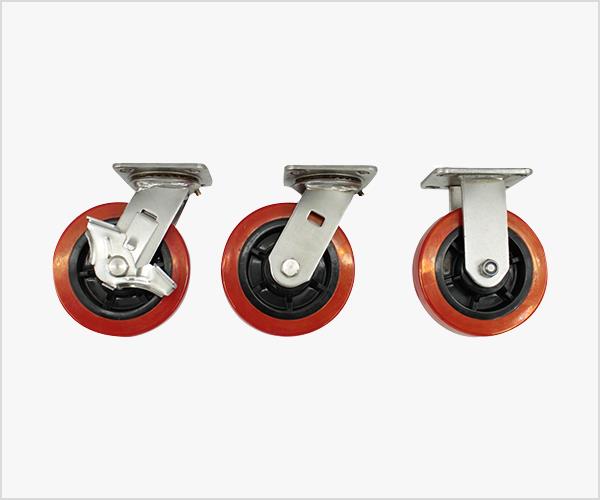1. Choose size
Generally speaking, the larger the diameter of the casters, the less force is used to push them, and the stronger the ability to overcome obstacles. Since casters were first industrialized in the West at the end of the 19th century, casters are generally expressed in inches. For example, most supermarket trolleys in China use 5-inch or 4-inch casters.
The caster sizes currently on the market range from 1 inch to 10 inches. The casters we often use are 2 inches, 2.5 inches, 3 inches, 3.5 inches, 4 inches, 5 inches, 6 inches, 8 inches, 10 inches, etc. Supermarket shopping carts, logistics carts, tool carts and other casters that often need to be pushed are generally 4-6 inches. However, the larger diameter of the caster will increase the center of gravity and increase the cost of the equipment, which requires comprehensive consideration. If you do not need to push the equipment, such as items, refrigerators, etc., just move, clean, and use casters no more than 3 inches.
2. Look at the weight
Stainless steel casters have the same diameter and are generally produced with different bearing methods such as light, medium and heavy. The method is to make the wheels and brackets have different thicknesses or materials.
3. Wheel material
This is very important, generally PU, TPR, PP, rubber, nylon, etc. The main material of our company's casters is polyurethane.
4. Installation method
Under normal circumstances, the screw, insert rod, and expansion rubber sleeve can be used for light loads, and the bottom plate can be used for heavy loads or directly welded to the equipment.
5. Brakes
6. The arrangement of casters to equipment:
The layout is different, which not only affects the cost, but also has a very different impression!
7. Bracket selection
Divided into directional type and general type, the material is generally carbon steel, which can be electroplated, such as galvanizing, copper plating, nickel plating, chrome plating, spraying, etc. Stainless steel casters use stainless steel brackets.

Related News
- What is the application range of heavy duty casters and how should daily maintenance and inspection be done?
- Instructions and precautions for leveling casters
- Knowledge about the product warranty period and maintenance of industrial casters
- The main application fields of industrial universal wheels and the selection of casters
- How to overhaul the brake casters?
- The composition of the accessories of the trolley casters and the carrying weight
- What inspections and tests must be passed during the production of shock-absorbing casters?
- Features of silent casters and introduction of accessories
- What is the market demand for polyurethane casters? What are the development prospects?

